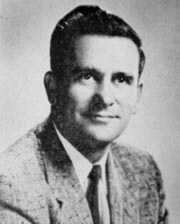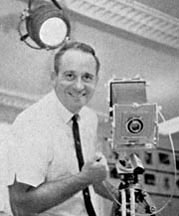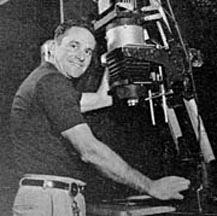|
When Reseda High opened it's doors in 1955, Mr. King was offered the opportunity to build a photography program from scratch. He took on that challenge, and set about establishing what was to become the single most successful high school photography program in the country. |
|
|
|
Mr. King set the bar high from the start. He has always expected the world from his students, not just teaching them technique, but emphasizing the importance of meeting deadlines and producing a quality product. Many will remember the sign on Mr. King's office wall: "Don't tell me how good you are - SHOW ME!" He encouraged competition, challenging his students to do their best work, and letting them know in no uncertain terms when there is room for improvement. In his high school classes, he posted every student's grades on his office door, for all to see. Now THAT was pressure. And each week the students themselves voted to select the "Picture of the Week" which was displayed prominently on the classroom wall --- until the next vote. |
| The assignments were anything but easy, and the deadlines were tight. He began with the basics - a classic assignment required students to create a series of photographs illustrating the six basic compositional forms (circle, radius, curve, triangle, rectangle and cross). Another assignment required students to create three photographs illustrating "Story, Mood, and Design," plus one image that illustrated all three. Students learned to work with lights, to handle all formats of cameras, and to process and print their own work. Experimentation was encouraged. Advanced assignments included color processing and printing, and finally a multi-projector computer controlled slide show, set to music. For that assignment, students wrote scripts, created detailed storyboards, made titles, recorded music, and directed and produced their shows. |
|
|
|
Mr. King emphasized the importance of simplicity and pre-visualization, encouraging students to plan out their images, and to keep compositions simple for the greatest visual impact. K.I.S.S. (keep it simple stupid) might as well have been tatooed on every forehead in the class, and probably still echoes in their minds today. Mr. King taught his students to "see" light, to "feel" composition, and most importantly, to take responsibility for the images that they captured on film. |
|
|
|
|


